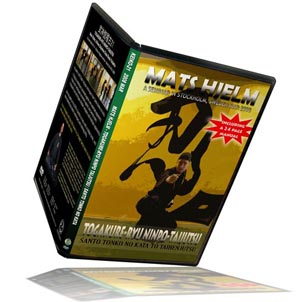Keiko#21 TOGAKURE-RYU SANTO TONKO NO KATA with MATS HJELM
From Budoshop by BUDOSHOP.SE


- 115 minutes, 1.2 Gb for $19.99
(h.264 M4V/MP4 400p format)
And 24 page pdf booklet
Available as download or full DVD!
This movie contains all 9 techniques from the Togakure-ryû Santo Tonko no Kata. The strategy of the fleeing rat is a collection of 3×3 techniques for quick self defense and then flee away safely.
- 3 Taijutsu techniques (unarmed against one unarmed opponent)
- 3 Muto-dori techniques (unarmed against one swords man)
- 3 Kakushi-buki techniques (hidden weapons against multiple opponents)
Also included on this movie is Sanshin no kata using a hidden knife, plus many taihenjutsu (breakfalling) techniques and training drills.
Included is also a 24 page pdf booklet with the Santo Tonko techniques.
Recorded in Stockholm May 2008
The instructions is in English and there is some subtitles explaining things which is not obvious.
About the instructor
Mats Hjelm started training in Bujinkan for the first time around 1983, but it wasn’t until 1986 he had the opportunity to start training more seriously under a Shidôshi. He attends around 20 seminars, go to Japan 2-3 times every year. Since he started training he never had a training break. He takes his budo training very seriously! If you want to sponsor a seminar or course, please don’t hesitate to contact him. For more information see his web site www.kesshi.com Note!
About the download
Click here for more information about our download files and how it works!…

 …
…
 …
…